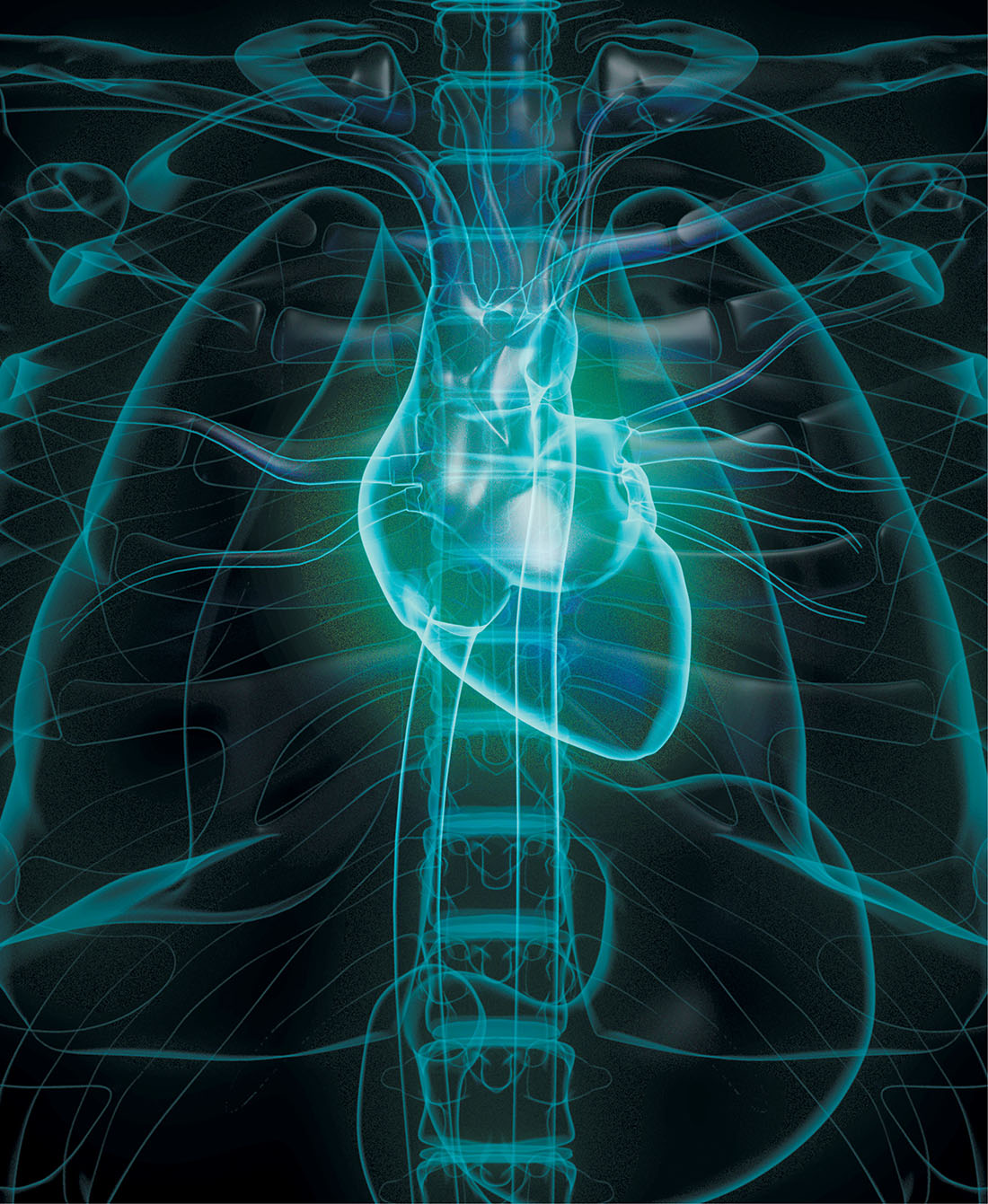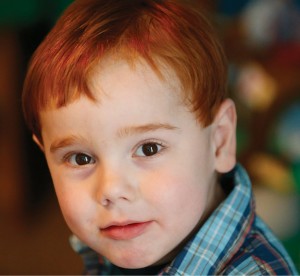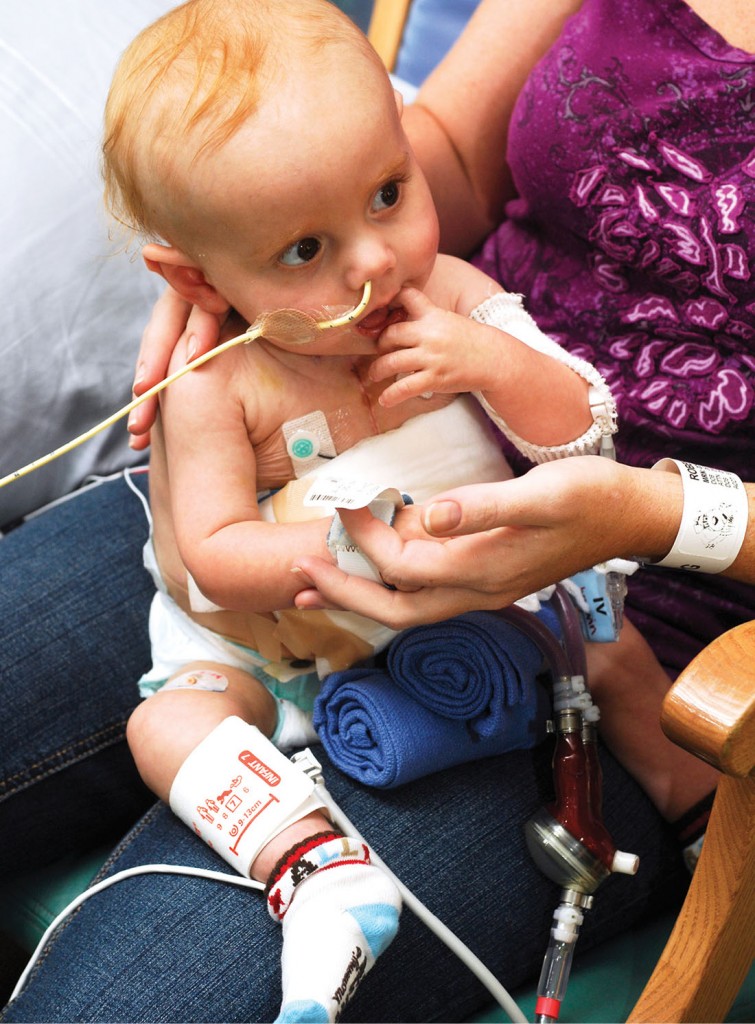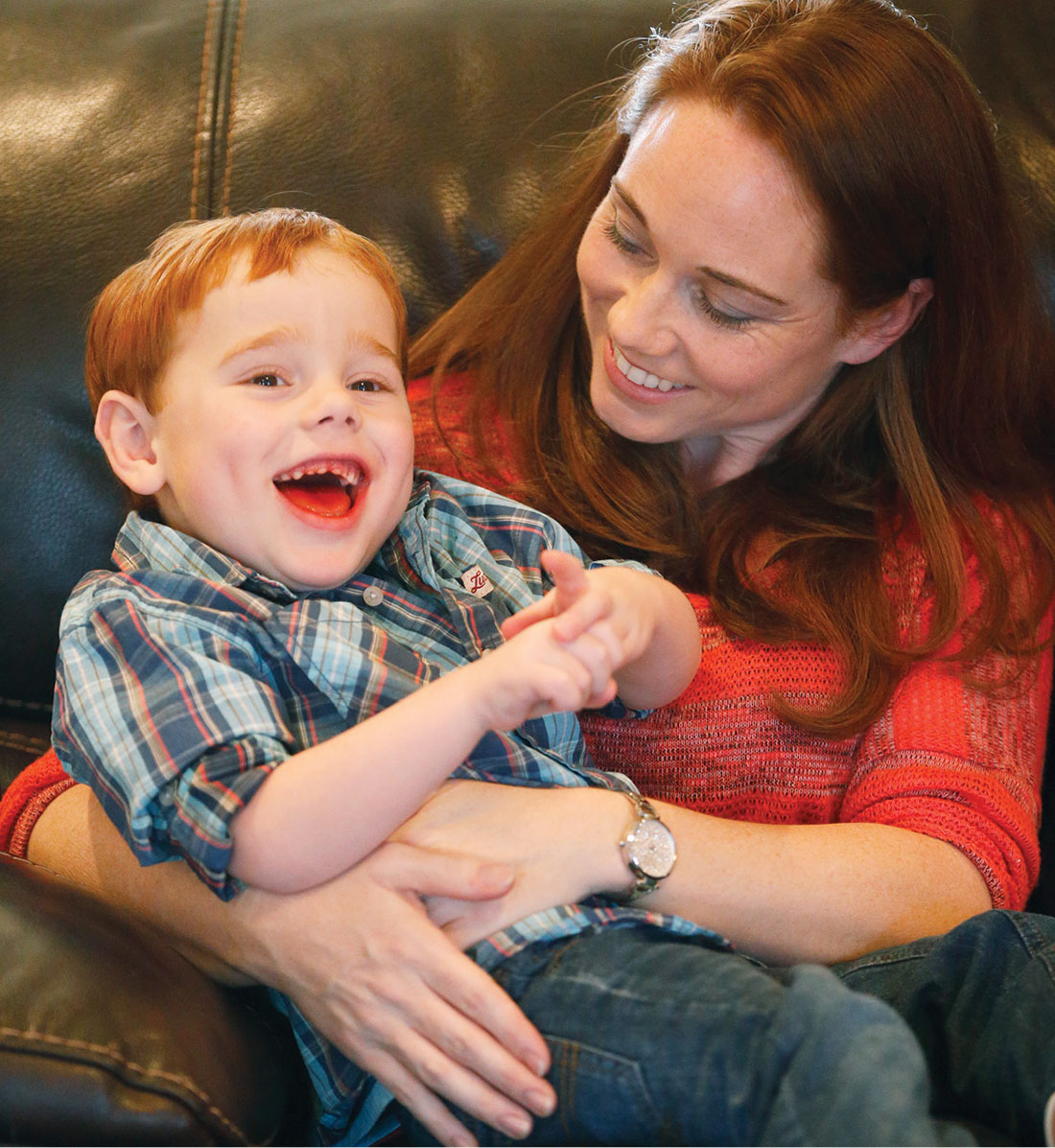25 Years after Its First Neonatal Heart Transplant, Vanderbilt Measures Survival in Decades, Not Days
By Jessica Pasley

Although Dr. Seth Karp has never met 4-year-old Nathan Roberts, the energetic preschooler personifies the Vanderbilt Transplant Center director’s dreams.
As a medical student 25 years ago, Karp recalls discussing the future of transplantation with fellow classmates, wondering if artificial hearts would be a part of the equation. “It was what we all dreamed about—having an artificial heart that worked, that could help patients and save lives,” he says.
The transplant center that Karp now leads celebrates its 25th anniversary this year, and it is achieving feats that were, not so long ago, the stuff of fantasies. In 2013 a record 403 transplants were performed, making the program the 13th-ranked transplant center in the country.
Vanderbilt’s program includes bone marrow/stem cell, kidney/pancreas, liver, heart, lung and combined heart/lung transplants. The center has been lauded for its high percentages for one-year, five-year and long-term survival rates for organ-transplant recipients.

“We can prolong lives that in the past would not have been saved,” says Karp.
One of the most exciting recent advances pertains to growth in mechanical heart usage. “Today we can get patients to transplant with the use of these devices,” says Karp, who joined the Vanderbilt Transplant Center in 2011 and was recently named the Ingram Professor of Surgical Sciences. “For all of us in the medical community, the ability to offer a device to patients whose own hearts no longer function properly is tremendous.”
Patients like Nathan.
James Nathan Roberts was born June 30, 2009. Within days of his birth, his parents noticed his breathing was more like panting. Mandy and Jimmy Roberts were startled to discover their newborn was taking 120 breaths a minute. The normal range for newborns is 30 to 60 breaths a minute.
The couple took their child to the doctor, who then sent them to their local hospital in Huntsville, Ala. Doctors informed the parents that Nathan needed specialized cardiovascular care. At 9 days old Nathan was transported by ambulance to Monroe Carell Jr. Children’s Hospital at Vanderbilt.
Doctors at Vanderbilt scheduled Nathan for a repair of his misshapen heart valves and to close the holes between the chambers of his heart. He became well enough to return home to Alabama with his parents and two older sisters, Lauren and Hannah.
ON BORROWED TIME
The plan was to wait until Nathan was older and stronger to replace a faulty mitral valve with an artificial one. Amanda and Jimmy thought they had a few years.
But in May 2010 their son developed a fever that sent him back to their local cardiologist as a precaution. That visit became an overnight stay, which turned into an Intensive Care Unit admission. Five days later Nathan was transported by LifeFlight to Vanderbilt.
“He was taking a turn for the worse,” remembers Jimmy. To complicate matters further, right about then Nashville was being hit by torrential rainfall and widespread flooding. “We were not sure what we’d be up against trying to get there. It was just a whirlwind.”
“I remember that he was getting worse and worse [in Alabama],” says Mandy. “Nothing they were doing was helping. They told us he had less than a 2 percent chance of survival. The doctor said they could do nothing more for Nathan there, and he wasn’t sure what was available that could help, but that Vanderbilt was the place to go.”

Nathan was so sick he was placed on ECMO (extracorporeal membrane oxygenation), a treatment that uses a pump to circulate blood through an artificial lung back into the bloodstream. This system provides oxygen while allowing time for the lungs and heart to heal.
After two weeks on ECMO, concern mounted because of increased risks for kidney failure, stroke and infections. Nathan was also heavily sedated and on a ventilator.
“It was a terrible feeling,” recalls Nathan’s mom. “It was a love–hate relationship. He needed the ECMO to survive, but we hated that every day he was on the machine, his chances of coming off and not surviving went up. As time wore on, Nathan had no other alternatives. He needed a heart immediately because he couldn’t come off the ECMO.”
Luckily, Vanderbilt had been working on securing an experimental ventricular assist device (VAD) for pediatric patients. Until recently, VAD use has been confined to adults—and even then the device often is too big for many women and children.
But recent advances have resulted in smaller, more reliable devices, like the Berlin Heart. The first of its kind for small children and infants, the Berlin Heart buys patients time until a donor heart can be found.
Nathan was the first patient in Tennessee to have the lifesaving device implanted into his tiny chest. A plastic tube about the width of a finger attaches to the heart and major vessels to divert blood briefly from the body to a pumping chamber that rests outside the patient’s body. The pump gives the blood a stronger push than the heart can muster to deliver oxygen and nutrients needed by the brain and vital organs to sustain life.
Lovingly named “Bernie” by the Roberts family, the Berlin device kept Nathan alive for nearly eight months until a suitable donor became available.
For Dr. Karla Christian, associate professor of cardiac surgery, the Berlin Heart was Nathan’s only option for survival. “This was really a big step to have an infant VAD and actually use it,” she says. “There are always risks, so it was imperative we educated the entire team about the process and what would be required of all of us to take care of Nathan.
“Without question, the Berlin was lifesaving for him. It allowed him to get stronger and more stable for his transplant. Devices and new technology like the Berlin have revolutionized our transplant program.”
BENCHSIDE MEETS BEDSIDE
Dr. Debra Dodd, associate professor of pediatrics, has followed Nathan since his arrival at Vanderbilt. She will continue to see him until he reaches adulthood.
“VADs have been essential to the survival of patients awaiting transplant,” says Dodd. “Kids have survived who would have died in the past without the devices. This provides much hope for us as providers and for the patients and families.
“It used to be that survival was measured in days or weeks back in the early days of transplantation. Now it is measured in decades.”
According to Dr. Bret Mettler, assistant professor of cardiac surgery and director of pediatric cardiac transplantation and mechanical support, seven patients at the Children’s Hospital have used the Berlin device and 17 total patients have been saved with VADs. The average duration of support is 78 days.
The Vanderbilt Transplant Center, the longest continuously running transplant program in Tennessee, remains committed to advancing the medical, social and scientific aspects of its transplantation programs.
“During the early years of solid organ transplantation, Vanderbilt made a significant commitment to what was at that time an emerging science,” says Dr. C. Wright Pinson, MD’80, deputy vice chancellor for health affairs at Vanderbilt University Medical Center, the H. William Scott Jr. Professor of Surgery, and director of the transplant center from 1993 to 2011.
“From the outset the Vanderbilt Transplant Center has played a significant national role, simultaneously saving lives and moving the science of organ transplantation forward,” he says. “Now, 25 years later the center is the region’s largest and most active program and among the top 15 nationally in overall transplant volume. I am extremely proud of the continuing achievements of the center’s dedicated faculty and staff.”
Dr. William H. Frist, the transplant center’s first director, remembers that when he first approached the creation of a comprehensive, multi-organ transplant program, he was not sure of the impact it could have. His goals for the center not only have been realized, but far exceeded.
“It has exploded into a reality that has well surpassed our initial dreams,” says Frist, who went on to serve two terms as U.S. senator from Tennessee before returning to medicine in 2007. He remains an adjunct professor of cardiac surgery at Vanderbilt. “At the time [of the center’s creation], no one else had the dual approach of a commitment to research while expediting research at the bedside. The magic of the transplant center was its ability to marry fast-paced emerging science with bedside clinical delivery.”
Not only does the Vanderbilt Transplant Center provide the most novel therapies and technology available, but it also incorporates patient support services in areas that include psychiatry, ethics, pharmacy, infectious disease, social work, and return-to-work (a service that assists transplant patients in finding employment or obtaining college scholarships). These programs have played a critical role in helping propel the center to its best year ever in terms of patients receiving lifesaving transplants.
“Our plan is to continue to introduce and develop new technologies and be at the cutting edge of the interface between science and clinical care,” says Karp. “My vision for the center is to be the most innovative in the country.”

HOPE RENEWED
On Jan. 13, 2011, Nathan Roberts received his new heart. Since then the Robertses have marveled at the transformation their son has made.
“Our hopes for him definitely have changed,” says Mandy Roberts. “We went from hearing that he had less than a 2 percent chance of survival, to watching him on ECMO, to rejoicing about the Berlin—all the while praying for a heart.
“It was a definite roller coaster during the first 18 months of his life. And now he has hours and hours and hours of energy! His enthusiasm and happiness are endless. He has taught us so much—and we have learned to enjoy every single day.”
Nathan’s dad finds it difficult to put into words what Vanderbilt has given his family. “It’s interesting to realize how far transplants have come, just looking at our own son,” says Jimmy. “Vanderbilt has been doing transplants for 25 years, and in that timeframe there have been 25 years’ worth of breakthroughs.
“It seems that something is always on the horizon. Now I’m just curious about what’s next and how it will affect Nathan.”
A former Nashville Banner copy editor and medical writer, Jessica Pasley has been an information officer for Vanderbilt University Medical Center News and Communications since 1999. She writes for several Medical Center publications and has a degree in journalism from Washington and Lee University.
Read more about the milestones of the Vanderbilt Transplant Center’s first 25 years.